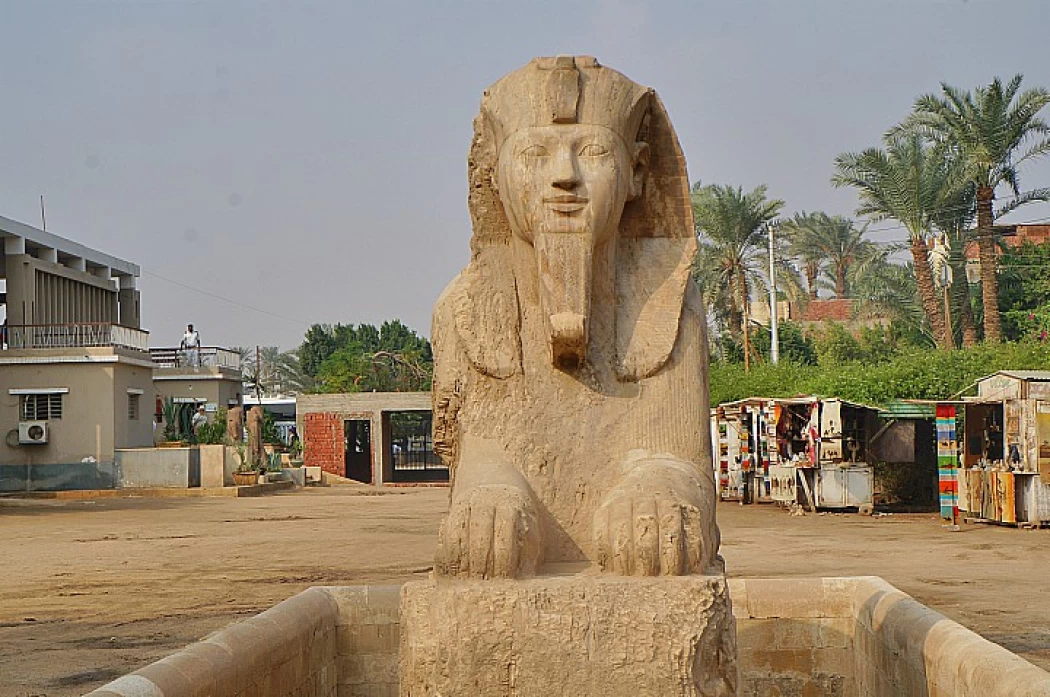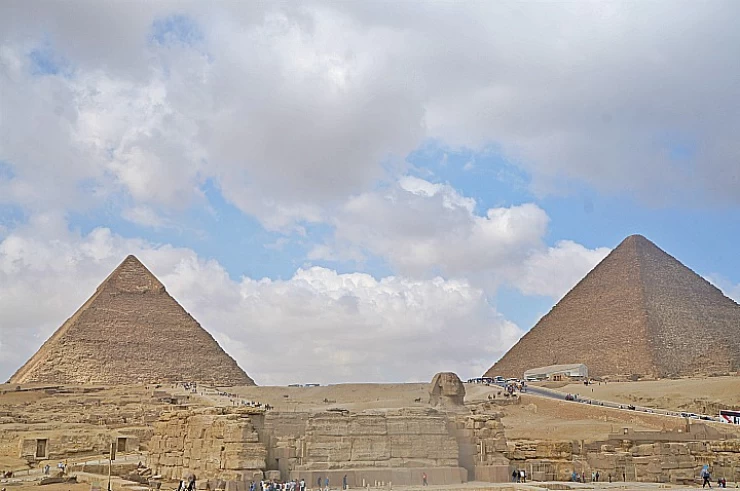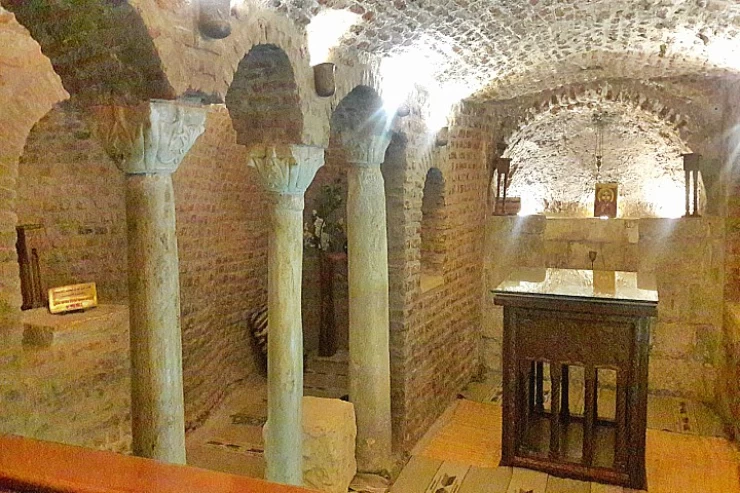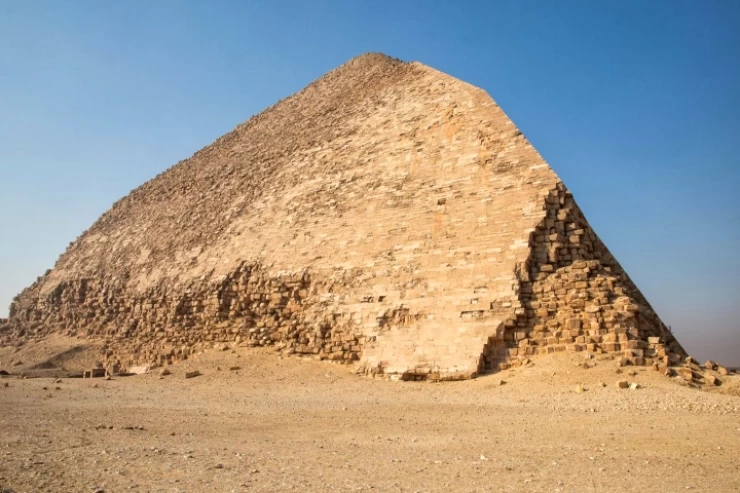
Memphis '' la antica capitale dell'Egitto ''

La città di Memphis '' La Antica Capitale Dell'Egitto è uno dei siti archeologici più intriganti e le cose da fare al Cairo. era l'antica capitale dell'Egitto, conosciuta anticamente come 'Inebu-hedge', il nome che non poteva essere pronunciato dai Greci, così la chiamarono dopo il nome di una delle piramidi nella posizione della città, la piramide è chiamato Mn Nefer che significa carino e stabile. Mn-Nefer era corrotto per essere Memphis, quindi gli arabi non potevano dirlo così chiamarono la città Manf, e questo nome fu finalmente pronunciato dagli egiziani moderni come Mit-Rahina e questo rimane come il nome attuale dove una volta si trovava una città così cosmopolita,i nostri Pacchetti vacanze potete usarle e per sapere cercate il link.
anticamente era il primo nome del Basso Egitto a quel tempo, fu fondata dal faraone Menes e fu la capitale dell'Egitto durante l'Antico Regno, le sue rovine si trovano vicino alla città (Mit Rahina) a circa 20 km a sud di Giza.
È in una posizione strategica alla foce del delta del Nilo, ecco perché è rimasta una città essenziale per tutta la Storia dell' Egitto. Il suo porto principale conteneva un'alta densità di magazzini che distribuivano cibo e merci in tutto l'antico regno. Workshop, fabbriche e bisogna ricordare che durante la sua età dell'oro, Memphis prosperò come centro regionale per il commercio, la religione e il commercio.
In un'area archeologica limitata dove si trovava il tempio di Ptah, Ptah è considerata la principale divinità di Memphis, era adorato come il dio creatore, e sua moglie Sekhmet e il loro figlio sono Nefertum.
Sono presenti alcune statue colossali esposte nel moderno museo del Mit Rahina, la più grande è quella raffigurante Ramses II ritrovata demolita e mutilata, originariamente alta più di 13 m.
Memphis divenne la capitale dell'antico Egitto per 1000 anni nel corso di otto dinastie consecutive durante l'Antico Regno. Ha raggiunto il suo apice di prestigio sotto la VI dinastia come centro per il culto di Ptah, il dio della creazione e delle opere d'arte. Il Tempio di Ptah, custodito dalla sfinge di alabastro, funge da memoriale del precedente potere e prestigio della città. La triade di Memphis, composta dal dio Ptah, sua moglie Sekhmet e il loro figlio Nefertem, costituì il fulcro del culto della città.
Menfi decadde durante la XVIII dinastia con l'ascesa di Tebe e fu restaurata durante il resto del Nuovo Regno e anche sotto i Persiani prima di essere nuovamente ignorata dopo la fondazione di Alessandria. Durante l'Impero Romano, Alessandria continuò come la più importante città egiziana. La seconda città d'Egitto fino alla fondazione di Fustat (o Fostat) nel 641 d.C. rimase Memphis. Ultimamente era in gran parte deserta e divenne una fonte di pietra per gli insediamenti circostanti. Ora, ancora, ha ancora un impressionante insieme di rovine che appartengono al XII secolo ma che presto sono diventate poco più che una distesa di basse rovine e pietre sparse.
Memphis credeva di essere sotto la protezione del dio Ptah, il patrono degli artisti. Il suo magnifico tempio, Hut-ka-Ptah, era una delle strutture più importanti della città in quel momento e non c'è dubbio che le rovine dell'ex capitale oggi offrono una prova frammentata del suo passato. Sono stati protetti, insieme al complesso piramidale di Giza, come Patrimonio dell'Umanità dal 1979. Il sito è aperto al pubblico come museo a cielo aperto.
Il nostro team vi aiuterà a viaggiare in Egitto e sperimentare il tempo soleggiato del nostro bel paese durante la Pasqua, grazie alla loro vasta conoscenza del turismo egiziano. Potreste personalizzare il tuo pacchetto selezionando uno dei nostri pacchetti di viaggio in Egitto o sfruttare al massimo il tuo tempo in una breve visita, imparando di più sulla storia egiziana e le sue affascinanti storie e vivendola attraverso tour privati al Cairo. Partecipa a uno dei nostri tour economici in Egitto attraverso il deserto del Sahara, come i tour di Siwa dal Cairo, per esempio, o preferibilmente i tour nel Deserto Bianco d'Egitto. Scoprireste i nostri tour di un giorno ad Assuan, fareste una gita di un giorno da Assuan ad Abu Simbel, o viaggireste via terra e vi godreste i nostri tour di un giorno a Luxor per vedere gli incredibili templi di Karnak, il Tempio di Luxor, il Tempio di Hatshepsut, e vedreste le meravigliose tombe splendidamente dipinte nella Valle dei Re, questo è il luogo dove i re e i governanti del nuovo regno riposano in pace e imparereste i loro riti di mummificazione e sepoltura.
Se siete curiosi di conoscere la città di Giza e il suo aspetto molto tempo fa, potete consultare il sito web "È sicuro viaggiare in Egitto?". Contiene materiale interessante, come immagini e fatti su Giza che vi insegneranno tutto sulla sua storia.
Located on the western banks of the Nile, southwards of Cairo stands one of the most significant historic and archaeological centers in Egypt, Memphis. This ancient metropolis existed as the capital of Egypt for approximately two thousand years from its establishment about in 3100 BC until it was overtaken by the might of Thebes and Alexandria. Given its foundation at the very earliest periods in Egyptian history and civilization, we can safely conclude that Memphis was more than just an administrative and political area but had active religious practice. Nowadays, although most of Memphis has perished over the years, the few remains still help one to piece together the colorful history of Egypt.
Let’s embark on a mission to unearth the beauty of Memphis and its history by visiting its fabulous buildings, temples, and sculptures that have endured the test of time.
The Birth of Memphis: A Historical Overview
According to popular belief, Memphis was founded by King Mena oder Narmer, who was the first ruler to unite Upper and Lower Egypt into one kingdom around 3100 B.C. Memphis, or Ineb Hedj, as the ancient Egyptians named it (translated into English as White Walls), was, on the other hand, quite favorablely located, at the delta of the Nile, where the river finally met the enormous desert. This made it a center on transport and trade activities, which connected Egypt with the Mediterranean Sea, Africa, and almost the entire world.
It did not take long before Memphis became an affluent city and the center of governance, economy, and arts in Egypt. In the course of history, it survived and thrived in the course of multiple periods of dynasties, with the Egyptian kings erecting grand and expensive palaces and temples as well as tombs. Such influence of the city lasted until the period of the Greco-Roman domination when Alexandria took over the center of power and Memphis started losing its significance over time.
Besides being the seat of power, Memphis was one of the chief religious centers in the entire ancient Egyptian world. It was here that the chief god, Ptah, was the god responsible for creation and crafts, with many temples dedicated to him and pilgrimage worshipers and qualitatively provided all over Egypt. As a passive creator, ‘one who brings into existence only by the utterance of a word’, it is easy to think why he was so significant to the hierarchy of the Egyptian gods. The most prominent temple within the city, the Temple of Ptah, dedicated to this god, attracted a great number of visitors and worshippers coming from different parts of Egypt.
In due course, more deities came to be worshiped in Memphis, such as Sekhmet, the warrior goddess of the lion’s head, who prophetically wards diseases, and Nefertem, the lotus god of regeneration. They were also known as Ptah’s family together with God Ptah, where they enhanced religious activities in the city of Memphis as religious activities became more focused.
Ruins have taken over a large section of Memphis today; however, whatever is left gives a snapshot of the city in its glorious days. Below are some of the most notable structures that have survived the test of time:
1. Temple of Ptah Statue
The Temple of Ptah is regarded as the center of all temples in Memphis and is arguably the 2nd Largest Temple in Ancient Egypt. Great losses have been incurred by the temple throughout time; however, archaeological excavations have retrieved traces of its pillars, images, and altars.
The temple complex also comprised several matrixes of courts, shrines, and chapels connected by hallways in which priests conducted rituals and offered sacrifices. Today the visitors will notice some broken colossal statues of the pharaohs that exist within the premises of the temple, showing the temple in its full splendor.
2. The colossal Statue of Ramses
One such famous monument of Memphis is the enormous limestone statue of Ramses II. Which is supposed to have been more than 30 feet high when standing with the statuette depicting the pharaoh in a striding position intricately decorated with several details of the headdress and attire worn by the king.
At the moment the statue is on display horizontally in the Memphis museum, enabling the audience to see the workmanship and proportions better. The Cairene sculptor in a low classical style statue of Ramses II holding a scepter in Memphis is indicative of one of the great kings of Egypt and also one of Egypt's greatest legacies.
3. The Alabaster Sphinx
Situated close to the gigantic image of Ramses II, the Alabaster Sphinx is a stunning artwork that weighs around 80 tons, stands roughly 13 feet in height, and extends 26 feet in length. It is assumed to have been created during the reign of Amenhotep II (18th Dynasty) and is believed to depict either him or his heir.
In contrast to the Great Sphinx of Giza, which was built out of limestone, the Alabaster Sphinx is made of one piece of alabaster, which is a sweet translucent stone. It is beautifully serene, and the features are expertly sculpted, which shows the emotions of Egyptian art vividly.
4. The Burial Tomb of Horemheb
General Horemheb, who would later assume the title of king, is interred in a sarcophagus that has been placed inside the Saqqara complex; however, he had stronger associations with Memphis. While Tutankhamun sat on the throne, he served in a prominent position as commander within the city and therefore knew its corridors too well. His is a handsome tomb covered with reliefs of his victories and greatness in arms.
This tomb provides much pertinent information on the 18th Dynasty as well as the political climate of Memphis during the reign of Horemheb in terms of arts and culture.
Recent Discoveries: Unearthing Memphis’ Hidden Treasures
Memphis remains a hotbed of archaeological activity today, with recent findings opening new windows into the previously obscure city. The remains of ancient statues, sarcophagi, and other pieces of art have been excavated from several periods of history in Memphis, which contributes to understanding this corner of the world.
In the hot seasons of recent years, archeologists dug up a high number of Sekhmet’s statues, which means that she and her worshippers’ devotion was cosmically present in Memphis. Moreover, ascertaining factors about their lives has also been demonstrated by the discovery of sepulchers of priests and other city officials, as well as that of artisans who were responsible for serving the city’s temples.
Memphis’ Legacy: The Rise and Fall of an Ancient Capital
Memphis was more than a political seat but a cultural and intellectual powerhouse. The city attracted many artists, scribes, and scholars, all of whom played a part in the artistic and literary development of Egypt. However, this was true until other regions grew into power; the seat of governance was moved to Thebes and later Alexandria, leading to the stagnation of Memphis.
Economic decline in the city occurred at a slow pace, but it was already noticeable during the Roman occupation. With the rise of Alexandria as the major educational and commercial hub, the temples and monuments of Memphis were neglected, and the city itself was eventually buried beneath the shifting sands of the Nile Delta.
Visiting Memphis Today: A Step Back in Time
Even though the majority of ancient Memphis has been reduced to ruins, the location is a significant place for people who are interested in the history of Egypt. The open museum that is found in Mit Rahina depicts the resplendent past of the city, with sculptures, sphinxes, and pieces of temples set in a calm environment.
Guided Tours: A guided tour is advisable since a narrative accompanying the monuments adds value to the monuments. A well-informed guide is capable of animating the ruins, making the visit worthwhile.
Combine with Saqqara: Expect Memphis to include a Saqqara tour as the Saater cemetery is just a few kilometers away. This is the best way to understand the evolution of funerary architecture and practices in general in ancient Egypt.
Photography: The place is also very good for photography, particularly for the giant statues and the Alabaster Sphinx. The old statues can be more delightful in the morning or evening when the light is not harsh.


















